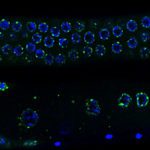Lien vers Pubmed [PMID] – 24486610
Lien DOI – 10.1016/j.jmb.2014.01.008S0022-2836(14)00046-1
J Mol Biol 2014 Apr; 426(8): 1786-98
Cytosolic heat shock protein 90 (Hsp90) has been shown to be essential for many infectious pathogens and is considered a potential target for drug development. In this study, we have carried out biochemical characterization of Hsp90 from a poorly studied protozoan parasite of clinical importance, Entamoeba histolytica. We have shown that Entamoeba Hsp90 can bind to both ATP and its pharmacological inhibitor, 17-AAG (17-allylamino-17-demethoxygeldanamycin), with Kd values of 365.2 and 10.77 μM, respectively, and it has a weak ATPase activity with a catalytic efficiency of 4.12×10(-4) min(-1) μM(-1). Using inhibitor 17-AAG, we have shown dependence of Entamoeba on Hsp90 for its growth and survival. Hsp90 function is regulated by various co-chaperones. Previous studies suggest a lack of several important co-chaperones in E. histolytica. In this study, we describe the presence of a novel homologue of co-chaperone Aha1 (activator of Hsp90 ATPase), EhAha1c, lacking a canonical Aha1 N-terminal domain. We also show that EhAha1c is capable of binding and stimulating ATPase activity of EhHsp90. In addition to highlighting the potential of Hsp90 inhibitors as drugs against amoebiasis, our study highlights the importance of E. histolytica in understanding the evolution of Hsp90 and its co-chaperone repertoire.

